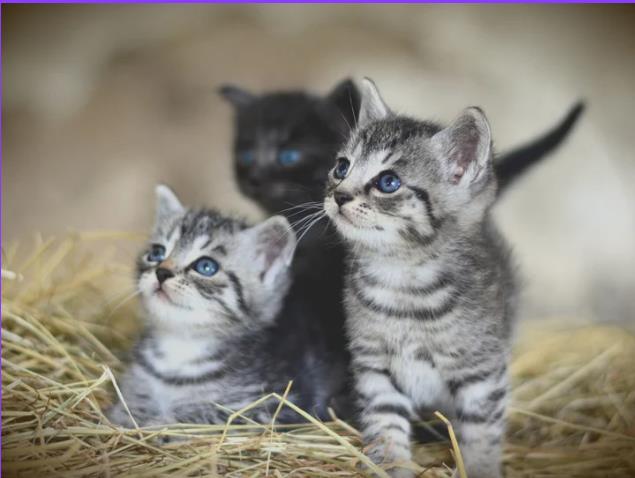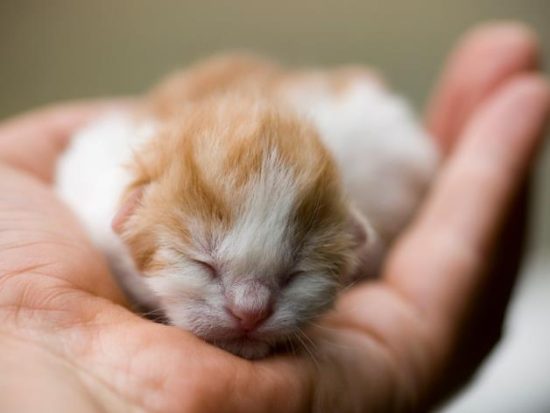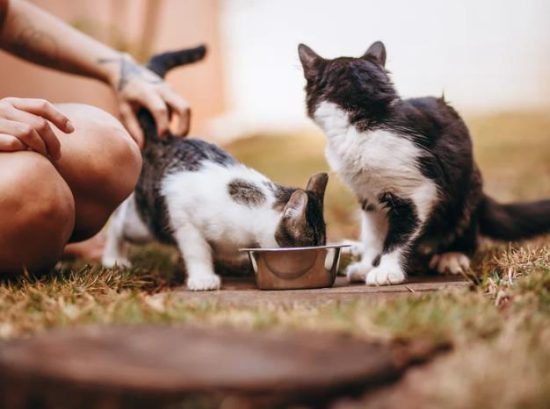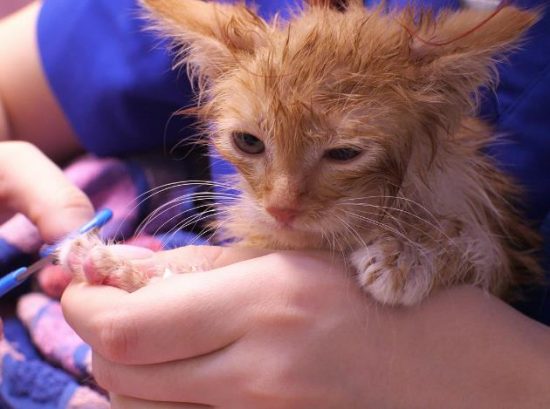How to Tell How Old a Kitten Is: An Easy Guide
Discover the secrets to determining a kitten’s age with our comprehensive guide. From physical cues to developmental milestones, learn how to accurately tell how old a kitten is.

Did you know that a kitten’s age can greatly affect its health and care needs? A whopping 95% of kittens require special age-specific care to do well. Knowing how old a kitten is key to proper care, giving the right vaccines and medicine, and ensuring it socializes well up until 8 weeks.
How to tell how old a kitten is? This guide will show you. We’ll look at their physical traits and milestones. From newborn to 8 weeks and beyond, you’ll know how to estimate their age. This way, you can take great care of them and find them the perfect home.
Key Takeaways:
- Knowing a kitten’s age is vital for their health and care.
- Watching their physical traits and behavior can tell you how old they are.
- Providing the right care, socialization, and visiting the vet are essential for kittens.
- Figuring out the kitten’s age helps choose the best treatments for them.
- This guide is a full solution to finding out a kitten’s age and meeting its needs.
Understanding Kitten Growth Stages

Kittens change a lot in their first weeks. They start very small, weighing only 3-4 ounces. When born, their eyes and ears are closed. Plus, they can’t walk yet or keep themselves warm. Within a week, kittens’ eyes start to open and their ears unfold. But they’re still without sight or sound. This time is mostly for sleeping, up to 90% of it. Keeping them warm, with temperatures 85-90°F, is crucial. They must be fed often and helped to go to the bathroom.
When kittens are just born, they have their eyes and ears closed. This stage is essential for their development. It underlines the need for good care at this point.
Kittens can’t walk or stay warm by themselves when they’re born. This fact shows how vital it is to keep them warm and safe. Giving them constant care is crucial in this early stage. As kittens grow, they change a lot physically and in behavior. With each stage, they need new care and feeding. This helps them as they progress through their development milestones.
Observing Physical Characteristics
When kittens grow, you can figure out their age by their physical traits. Their eyes and ears changing, the way they gain weight, and teeth coming out are all signs of how old a kitten is. This helps you know how mature the kitten is.
Eye and Ear Development
At two weeks old, kittens open their eyes and ears. They start to pay attention to sounds and what’s around them. This step shows they are moving from being a newborn to exploring the world. Observing the development of a kitten’s eyes and ears is crucial in understanding its growth and health. Kittens are born with closed eyes and ear canals, but these gradually open over the first few weeks of life. Typically, kittens begin to open their eyes between 7 to 10 days old, with the ears following suit shortly afterward. Initially, the eyes may appear blue, but their final color develops over time. Similarly, kittens’ ear canals gradually open, allowing them to hear and respond to auditory stimuli. Monitoring the progress of eye and ear development can provide insights into the kitten’s neurological and sensory development.
Weight Gain Patterns

Monitoring weight gain patterns in kittens is essential for assessing their overall health and nutritional status. Newborn kittens typically weigh around 3-4 ounces at birth, and they should steadily gain weight in the following weeks. During the first week, kittens may gain approximately 10-15% of their birth weight. Subsequently, they should gain weight at a rate of about 0.5 to 1 ounce per day until they reach about 4 weeks old. After that, weight gain slows down slightly but should still be steady. Any significant deviations from these weight gain patterns may indicate health issues or inadequate nutrition, warranting veterinary attention.
Teeth Emergence
Observing the emergence of a kitten’s teeth provides valuable insights into its stage of development and dietary needs. Kittens are born toothless, but their baby teeth, or deciduous teeth, begin to emerge around 2-4 weeks of age. The first teeth to appear are usually the incisors, followed by the canines and premolars. By 6-8 weeks of age, most kittens will have a full set of baby teeth. These temporary teeth serve essential functions in chewing and play but will eventually be replaced by permanent adult teeth. Monitoring the timing and progression of tooth emergence can help caregivers anticipate changes in the kitten’s diet and dental care needs.
How to tell how old a kitten is
When looking at a kitten, its behavior and what it can do are hints to its age. At about 3 weeks, kittens start to walk, though they might wobble. They get better and can pounce, run, and play by 4-5 weeks. They also learn to use the litter box and eat other food, not just their mom’s milk. Watching these changes in behavior helps you guess their approximate age accurately.
Observing Behavior Changes
A kitten’s actions are markers of how old it is. When a kitten is 3 weeks old, they take their first steps. They might be a bit shaky at the start. This walking milestone is key in figuring out a kitten’s age and growth.
At 4-5 weeks, kittens get much better at moving. They become very playful, jumping and running around a lot. Their increased activity and play is a sign of how to tell how old a kitten is.
Caring for Kittens at Different Ages
Kittens need different care as they grow. Their age helps us give them the right nutrition, housing, and care. It’s vital to match the care to their kitten development stages and kitten growth milestones.
Feeding and Nutrition Requirements

Caring for kittens involves meeting their specific feeding and nutritional needs at different stages of development. Newborn kittens rely solely on their mother’s milk for nourishment during their first few weeks of life. If the mother is not available or unable to nurse, specialized kitten milk replacers are necessary to provide essential nutrients. As kittens transition to solid food, typically around 4-6 weeks old, offering high-quality kitten food formulated to meet their dietary requirements is essential. Frequent, small meals throughout the day help support their rapid growth and development. As they mature, kittens can gradually transition to a regular feeding schedule and a balanced diet suitable for their age and activity level.
Temperature and Environment Needs
Maintaining an optimal temperature and environment is crucial for the health and well-being of kittens at different ages. Newborn kittens are particularly vulnerable to temperature fluctuations and require a warm, draft-free environment to thrive. Ideally, the temperature should be around 75-80°F (24-27°C) during the first few weeks of life. Providing a heat source such as a heating pad set on low or a heat lamp can help regulate temperature for newborns. As kittens grow and become more mobile, ensuring a safe and stimulating environment with access to food, water, litter, and comfortable resting areas is essential for their physical and psychological development.
Introducing to Litter Box
Introducing kittens to the litter box is a critical aspect of their care and training. Kittens typically begin to explore the litter box and show interest in eliminating waste around 3-4 weeks of age. Providing a shallow, kitten-friendly litter box filled with unscented, clumping litter encourages proper litter box use. Placing the kitten in the litter box after meals or naps can help establish the association between the box and elimination. Additionally, keeping the litter box clean and easily accessible ensures that kittens develop good litter box habits as they grow older.
Playtime and Interaction
Here are some important stages and milestones to look for:
- Eyes and ears opening by 2 weeks of age
- First steps around 3 weeks old
- Coordinated movement and playing abilities by 4-5 weeks
- Weaning from mother’s milk and litter box use by 4-5 weeks
- Emergence of permanent teeth by 12-16 weeks
Watching how a kitten grows lets you guess its age accurately. You can track its features and behavior, and you can tell where it is in its growth. This is good for knowing how to care for it well.
Age-Related Kitten Care Tips
Kittens change a lot as they grow. The care they need changes too. It’s vital to know how to take care of them at each stage. This way, they stay healthy, happy, and connect well with their new family.
Handling and Bonding
Handling and bonding with kittens are essential aspects of their care, and age-related considerations can help ensure positive interactions. For newborn kittens, gentle handling is crucial for socialization and fostering trust. Supporting their fragile bodies and providing warmth and comfort mimics the mother’s nurturing touch. As kittens grow and become more mobile, frequent but gentle handling helps them acclimate to human touch and builds a strong bond with their caregivers. Encouraging interactive play sessions and cuddle time fosters a sense of security and strengthens the human-animal bond, laying the foundation for a lifelong relationship built on trust and affection.
Grooming and Nail Trimming

Grooming and nail trimming are important aspects of kitten care that evolve with age and development. For newborn kittens, grooming is primarily the mother cat’s responsibility, but gentle brushing with a soft, damp cloth can help mimic her grooming actions and promote cleanliness. As kittens begin to explore their environment and interact with littermates, regular grooming sessions with a soft brush or grooming mitt help remove loose fur, prevent matting, and reinforce positive associations with handling. Introducing nail trimming early on, using specially designed kitten nail clippers, helps kittens become accustomed to the procedure and prevents overgrowth and sharp nails. Gradually increasing the frequency of grooming and nail trimming sessions as kittens grow older helps maintain their health and well-being while reinforcing trust and cooperation.
FAQs
How can I determine a kitten’s age?
You can tell a kitten’s age by looking at their eyes, ears, and teeth. Also, how they walk, play, and use the litter box can give hints.
What are the key growth stages for kittens?
Kittens change a lot in their first weeks. They can’t walk or stay warm at first. But by 3 weeks, they’re walking, still a bit unsteady. At 4-5 weeks, they play, use the litter box, and learn to eat solid food.
How does a kitten’s weight relate to their age?
Kitten weight helps guess their age. For example, a 1-pound kitten might be 4 weeks old. A 2-pound kitten could be 8 weeks. And a 2.5-pound kitten around 10 weeks.
How does a kitten’s behavior and abilities change as they age?
Watching a kitten can show you how old they might be. At 3 weeks, they start walking. By 4-5 weeks, they’re better at it and enjoy playing. These signs can help figure out their age.
What are the key considerations for caring for kittens at different ages?
Care for kittens changes as they grow. Newborns need warmth and to be fed often. At 4-5 weeks, kittens eat solid food and start using a litter box. The room can be cooler by then, around 70-80°F.
Why is socialization important for kittens, and when should it occur?
Proper socialization now is key for kittens. They need to meet people and other pets before 8 weeks, which helps them become great adult cats. Knowing a kitten’s age helps with socializing and training.
What are the key growth milestones for kittens?
Here are some key steps for kittens: Eyes and ears open at 2 weeks. By 3 weeks, they start walking. They’re playful at 4-5 weeks and use the litter box. They also start eating solid food then. By 12-16 weeks, they have all their adult teeth.
Why is knowing a kitten’s age important for veterinary care?
Knowing a kitten’s age means they get the right vet care. Vacs and deworming treatments happen at set times. Everyone agrees, 5-6 months is best for spaying or neutering. Getting their age right is good for their health.
How does a kitten’s age affect their care and handling?
Taking care of kittens changes as they grow. Newborns need gentle care. They also need help to pee and poop. But, as they get older, they play more and need nail trims. Knowing their age helps handle them the right way.





